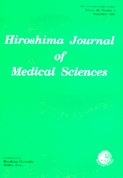Volume 71, Issue 1-2
Displaying 1-4 of 4 articles from this issue
- |<
- <
- 1
- >
- >|
-
2022 Volume 71 Issue 1-2 Pages 1-8
Published: June 30, 2022
Released on J-STAGE: September 12, 2022
Download PDF (1464K) Full view HTML -
2022 Volume 71 Issue 1-2 Pages 9-22
Published: June 30, 2022
Released on J-STAGE: September 12, 2022
Download PDF (14998K) Full view HTML -
2022 Volume 71 Issue 1-2 Pages 23-30
Published: June 30, 2022
Released on J-STAGE: September 12, 2022
Download PDF (4353K) Full view HTML -
2022 Volume 71 Issue 1-2 Pages 31-38
Published: June 30, 2022
Released on J-STAGE: September 12, 2022
Download PDF (553K) Full view HTML
- |<
- <
- 1
- >
- >|
